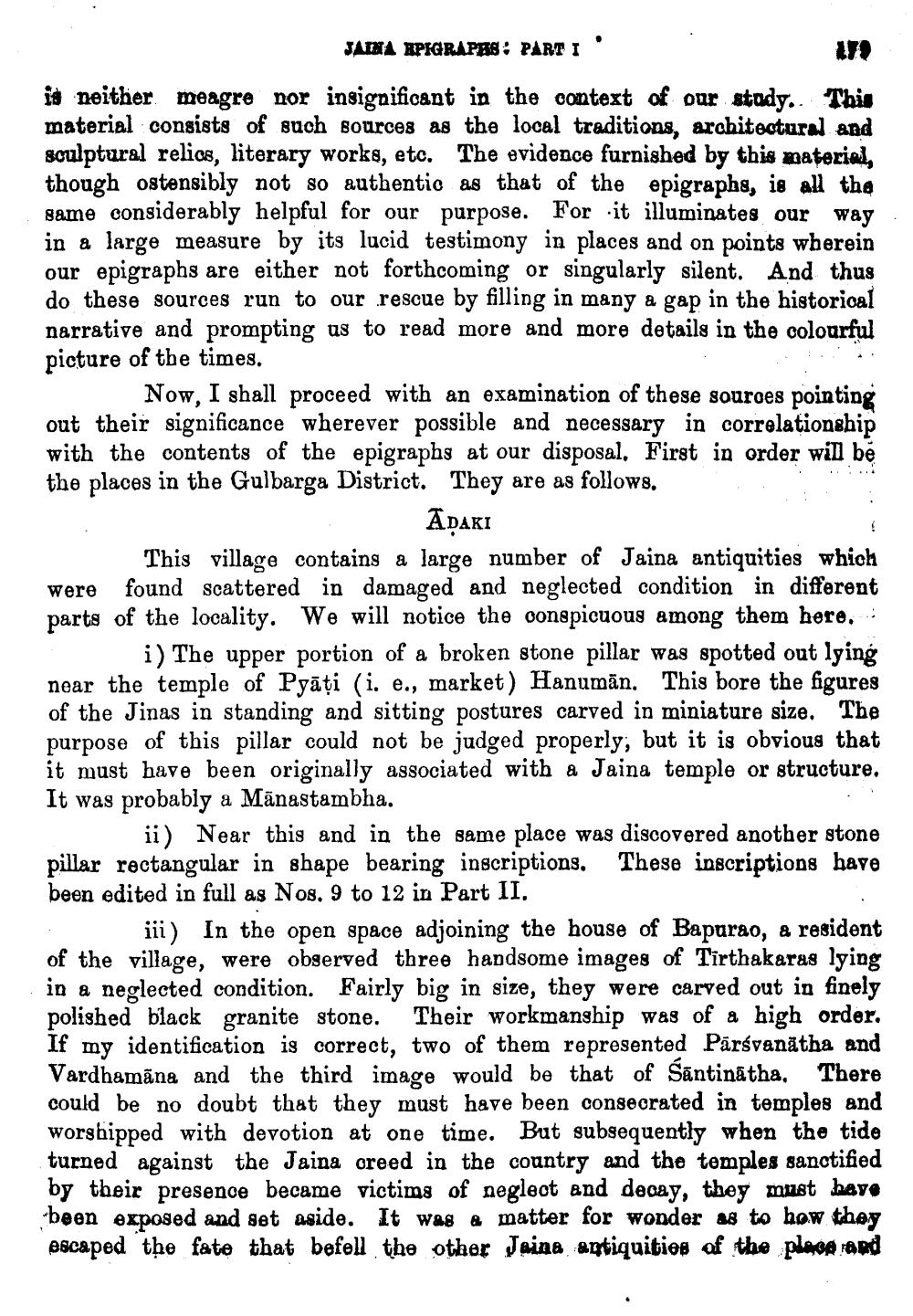________________
.
PART II
JAINA EPIGRAPAS: PARTI is neither meagre nor insignificant in the context of our study. This material consists of such sources as the local traditions, architectural and sculptural relics, literary works, etc. The evidence furnished by this material, though ostensibly not so authentic as that of the epigraphs, is all the same considerably helpful for our purpose. For .it illuminates our way in a large measure by its lucid testimony in places and on points wherein our epigraphs are either not forthcoming or singularly silent. And thus do these sources run to our rescue by filling in many a gap in the historical narrative and prompting us to read more and more details in the colourful picture of the times.
Now, I shall proceed with an examination of these souroes pointing out their significance wherever possible and necessary in correlationship with the contents of the epigraphs at our disposal, First in order will be the places in the Gulbarga District. They are as follows.
ADAKI This village contains a large number of Jaina antiquities which were found scattered in damaged and neglected condition in different parts of the locality. We will notice the conspicuous among them here. :
i) The upper portion of a broken stone pillar was spotted out lying near the temple of Pyāți (i. e., market) Hanumān. This bore the figures of the Jinas in standing and sitting postures carved in miniature size. The purpose of this pillar could not be judged properly; but it is obvious that it must have been originally associated with a Jaina temple or structure. It was probably a Mānastambha.
ii) Near this and in the same place was discovered another stone pillar rectangular in shape bearing inscriptions. These inscriptions have been edited in full as Nos. 9 to 12 in Part II.
iii) In the open space adjoining the house of Bapurao, & resident of the village, were observed three handsome images of Tirthakaras lying in a neglected condition. Fairly big in size, they were carved out in finely polished black granite stone. Their workmanship was of a high order. If my identification is correct, two of them represented Pārsvanatha and Vardhamāna and the third image would be that of śāntinātha. There could be no doubt that they must have been consecrated in temples and worshipped with devotion at one time. But subsequently when the tide turned against the Jaina creed in the country and the temples sanctified by their presence became victims of neglect and decay, they must have been exposed and set aside. It was a matter for wonder as to how they escaped the fate that befell the other Joina antiquities of the place and




